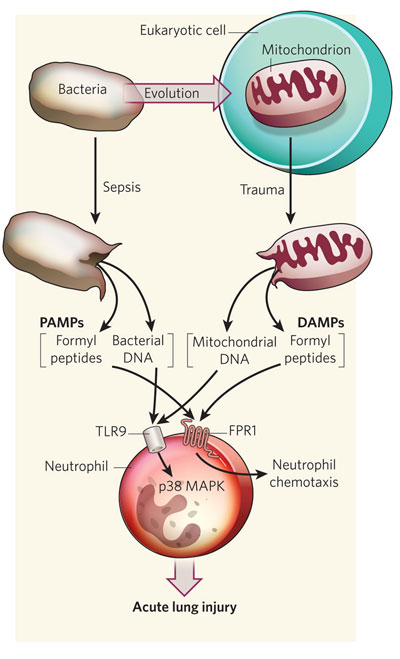PAMPs and DAMPs in the inflammatory response
Keywords
Flag Inappropriate
Delete Content

PAMPs and DAMPs in the inflammatory response
Similar to the release of bacterial DNA following sepsis, the mitochondrial DNA released by severe trauma can also act through the toll-like receptor-9 (TLR9) to activate neutrophils by activating p38 MAP kinase (MAPK). Similarly, formylated peptides released from bacteria and mitochondria activate the formyl peptide receptor-1 (FPR1) and attract neutrophils by the process of chemotaxis to sites of inflammation and injury. In both cases, the outcome may be acute lung injury, which is part of the systemic inflammatory response syndrome (SIRS). DAMPs, damage-associated molecular patterns; PAMPs, pathogen-associated molecular patterns.
This image is linked to the following Scitable pages:
Due to their similarities to bacteria, mitochondria can actually trigger severe illness in humans. How can organelles inside our bodies suddenly become a threat?





















Comments
CloseComments
Please Post Your Comment